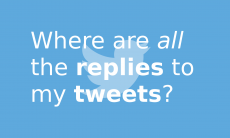A few days ago, our fearless leader noted “nobody needs both Pinterest and LinkedIn.” And, generally, Mike’s absolutely right. Too many guys in black turtlenecks and very cool eyeglasses try to fit their standard portfolio of tricks and tips to your business, without really considering how to various social channels fit your brand’s needs. But…Why don’t you need both Pinterest and LinkedIn? Actually, you might. Read on to find out why.

The mistake that Mike rightly points out in his post is that too many “social marketing agencies” try to fit every business into the same size-and-shape “social marketing plan,” with little regard for how well that “plan” works for an individual business or brand. Anyone who does that, though, isn’t a social media marketer. They’re snake-oil salesmen.
What makes every business different is the mix of customers it talks to at a given time and the messages it shares with those customer types.
For instance, a client of mine uses Pinterest to market its services to one target customer: young women planning their weddings and other social events. At the same time, the client also uses LinkedIn to connect with its current and future employees, as well as to coordinate contacts with professional event planners, PR and folks in the media.
Of course, what works for this business won’t work for everyone. But that’s the point.
Think about all the possible customer types your business might interact with regularly:
- Business-to-business customers
- Current or future employees
- Journalists, media, PR contacts
- Cause marketing segments
- Demographic groups such as youth, GenX, boomers, or diversity marketing segments
- Psychographic segments around activities, attitudes or values
And all of this says nothing of “traditional” mass-market consumers.
Clearly, it’s as big a mistake to assume you’re going to reach each and every one of the segments important to you with just Facebook or a Google+ page (especially just a Google+ page).
Your message — and the medium you use to promote that message — depends on a clear understanding of your customer. As I’ve noted in the past, it’s the marriage of promotion, product, place and price that resonates most fully for your customer. But it has no chance at all if you’re not matching those elements to the right customer. For some, that’s going to be Pinterest. For others, LinkedIn. And for still others, Instagram, Twitter, Facebook, or your own website.
If your business only deals with one customer type, than you only need to worry about the marketing channels used by that customer. But, if your customer is a little more diverse, don’t be surprised if you need to use multiple, diverse messages and multiple, diverse channels to reach all those folks.
And, if some guy in designer frames and incredibly cool shoes suggests you’re going to “saturate” social by putting the same message in Pinterest, LinkedIn, Twitter or the next big social network, send him a message that’s targeted, direct and clear, too: Show him the door.






